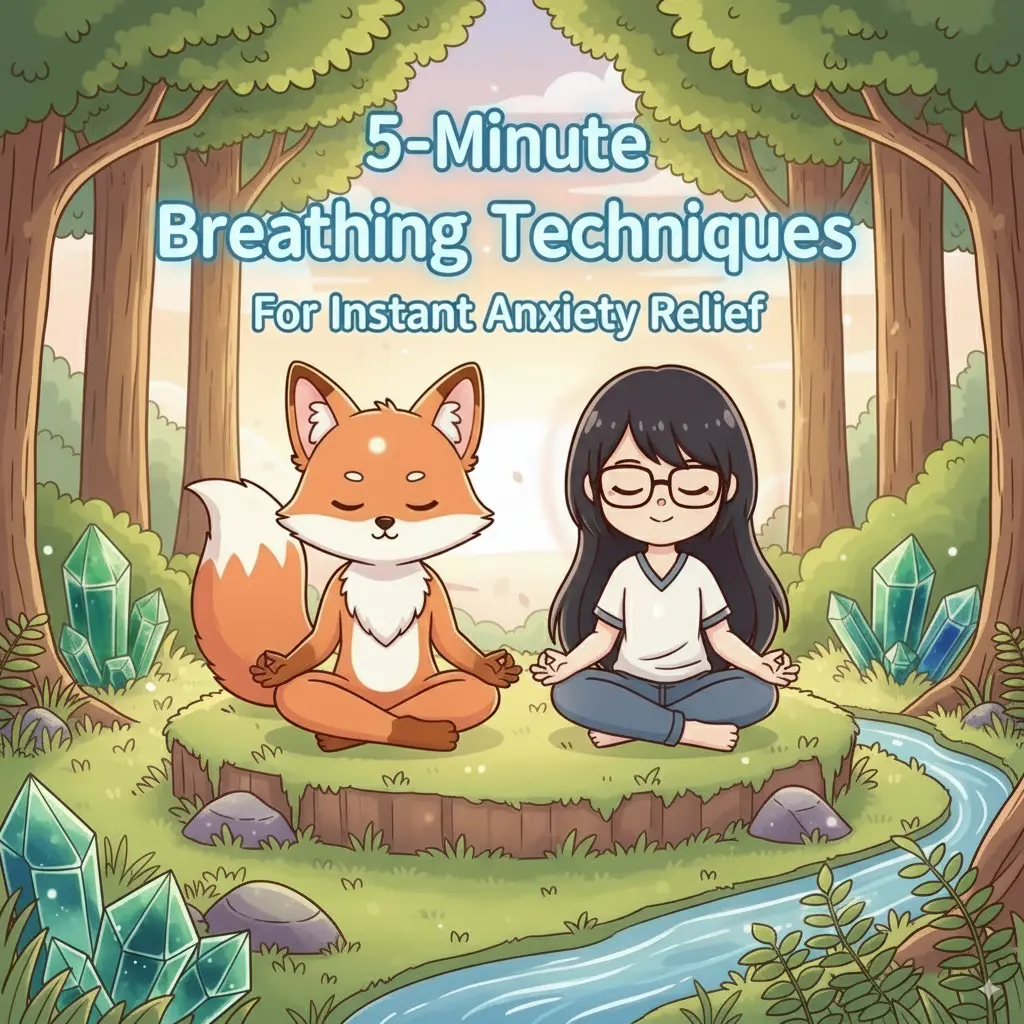
5-Minute Breathing Exercises That Actually Reduce Stress (Science-Backed)
Stanford researchers discovered specific breathing patterns that activate your parasympathetic nervous system within minutes. Learn the most effective science-backed breathing techniques for immediate stress relief.
5-Minute Breathing Exercises That Actually Reduce Stress (Science-Backed)
What Makes Breathing Exercises Work for Stress Relief?
Stanford researchers discovered that specific breathing patterns activate your parasympathetic nervous system within minutes. Their 2024 study compared different breathing techniques and found cyclic sighing most effective for immediate mood improvement.
The Cyclic Sighing Technique (Most Effective)
How to practice:
- Inhale through nose for 4 counts
- Take a second, smaller inhale (double inhale)
- Exhale slowly through mouth for 8 counts
- Repeat for 5 minutes
Why it works: This pattern stimulates the vagus nerve more effectively than traditional breathing, reducing cortisol by up to 23% in one session.
Diaphragmatic Breathing for Daily Practice
The technique:
- Place one hand on chest, one on belly
- Breathe so only the belly hand moves
- Inhale for 4, hold for 2, exhale for 6
- Practice 3-4 times daily
Research shows this reduces anxiety symptoms within 8 weeks of regular practice.
Box Breathing for Immediate Calm
Military personnel use this technique for acute stress:
- Inhale for 4 counts
- Hold for 4 counts
- Exhale for 4 counts
- Hold empty for 4 counts
Studies report 15% reduction in stress hormones after just one 5-minute session.
4-7-8 Breathing for Sleep and Anxiety
Dr. Andrew Weil's technique activates relaxation response:
- Inhale through nose for 4
- Hold breath for 7
- Exhale through mouth for 8
Clinical trials show 67% of participants fall asleep faster using this method.
When to Use Each Technique
Morning stress: Cyclic sighing or diaphragmatic breathing Work anxiety: Box breathing (discreet and effective) Evening wind-down: 4-7-8 breathing Panic moments: Any technique, focus on longer exhales
Making It Stick: Implementation Tips
Start with just 2 minutes daily. Research confirms consistency matters more than duration. Set phone reminders for three breathing breaks daily.
Track your stress levels before and after practice. Most people notice improvement within one week of regular use.
The Science Behind Why This Works
Controlled breathing directly influences your autonomic nervous system. When you extend exhales, you activate the vagus nerve, which signals your brain to reduce stress hormone production.
Brain imaging studies show that after 8 weeks of daily breathing practice, the amygdala (fear center) becomes less reactive to stressors.
Common Mistakes to Avoid
- Forcing the breath (should feel natural after first few cycles)
- Breathing too fast (slower is always better)
- Holding tension in shoulders or jaw
- Expecting instant results (give it one week of consistent practice)
Quick Start Guide
Choose one technique. Practice same time daily for one week. Notice stress levels before and after. Add second technique only after first becomes automatic.
Most effective approach: 5 minutes morning cyclic sighing, 2 minutes midday box breathing, 3 minutes evening 4-7-8 breathing.
Remember: these aren't just relaxation techniques. They're evidence-based tools that measurably change your physiology and stress response.
Did this article help you on your healing journey? I'd love to hear from you!
Send Sisi a Message